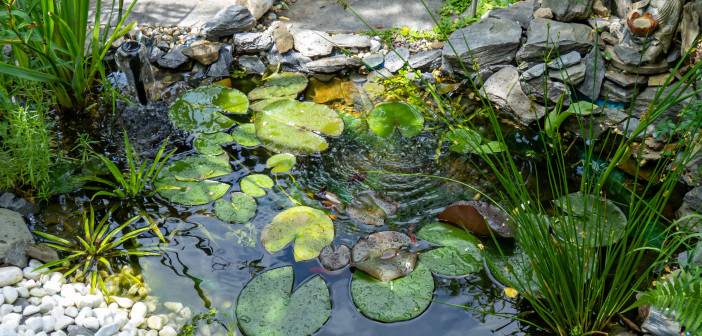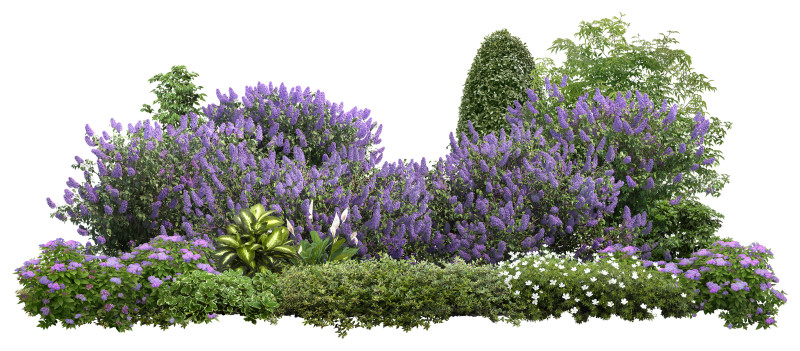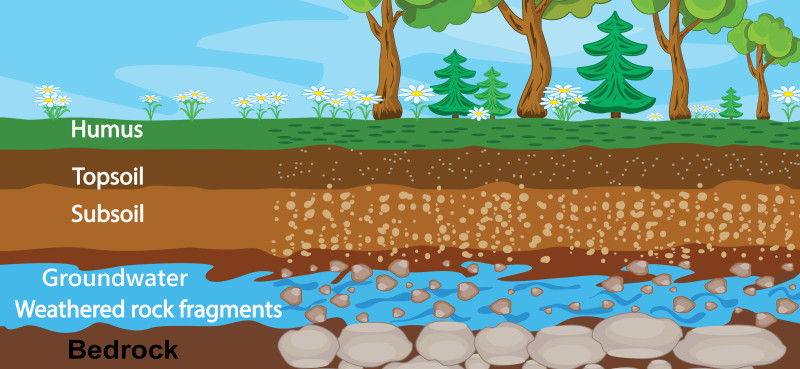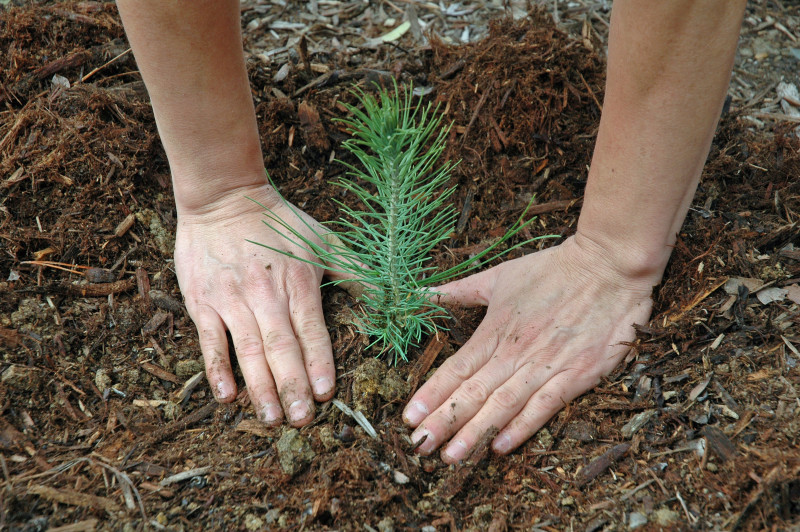Build a small pond in your yard, and it will significantly enhance local wildlife value by creating a diverse and thriving ecosystem. It’ll provide a vital water source for various animals, including birds, amphibians, insects, and small mammals, especially during dry periods. Its habitat will be a breeding ground for frogs, toads, dragonflies, and others, contributing to biodiversity.
Add aquatic plants to provide shelter and breeding sites for insects and other invertebrates. Plants will also add visual appeal. Submerged vegetation will serve as a crucial oxygenator, maintaining water quality. Moreover, a well-maintained pond attracts pollinators such as bees and butterflies, fostering a balanced and dynamic environment. This natural oasis not only enriches your garden’s aesthetic appeal but also plays a pivotal role in promoting ecological balance and conservation.
Here’s a step-by-step guide to building a small backyard pond. Wildlife will love it, and so will you:
1. Planning
- Location: Choose a spot with a good mix of sun and shade.
- Size and Shape: Decide on the size and shape based on the space and your preferences.
2. Materials Needed
- Pond liner (PVC, rubber, or pre-formed)
- Shovel
- Rocks and stones
- Sand
- Underlayment (optional for additional liner protection)
- Water plants and fish (if desired)
- Pump and filter (if necessary)
3. Digging the Pond
- Mark the outline: Use a rope or garden hose to outline the shape.
- Dig: Dig the pond, lining it with underwater shelves for potted plants to stand on. If you plan to have fish, the pond should be a minimum of 3 feet (0.9 m) deep. See: Plants for a pond
- Remove debris: Clear out any sharp objects that could damage the liner.
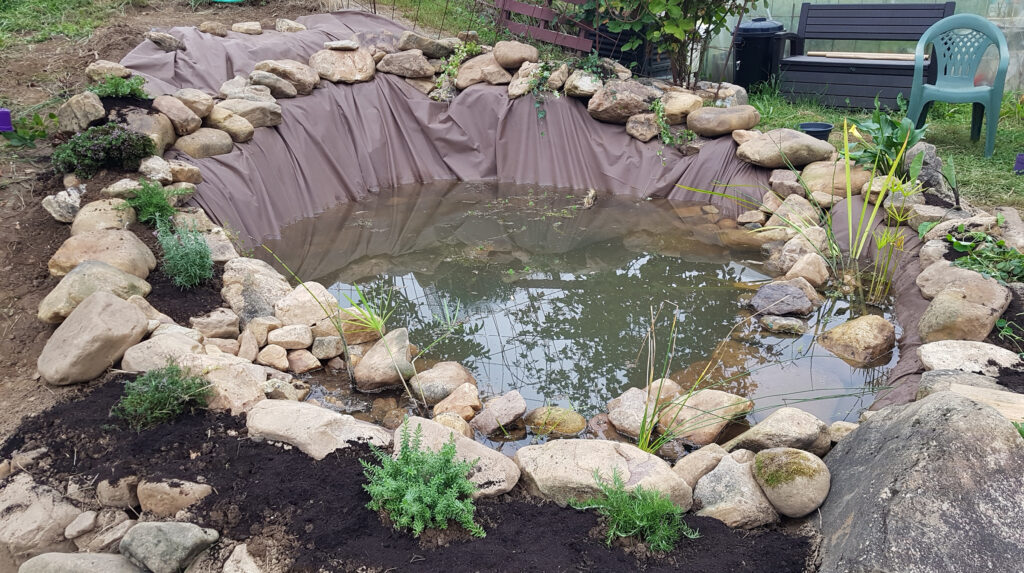
Half-fill the pond with water to hold the liner in place while adding stones to the edges (© La Huertina De Toni / Shutterstock)
4. Installing the Liner
- Lay underlayment: Place a protective underlayment layer (optional) using old carpet or specialized fabric available at garden centers).
- Position the liner: Take your time. Fit it into the hole, mold it into all corners, and ensure it covers all edges with extra to spare. Where needed, make pleats to mold it into place. Black vinyl duct tape will hold the pleats in place, while you use stones or bricks to keep the liner in place around the edges. Take care not to puncture it.
- Smooth and secure: Fill the pond half full to hold the liner in place. Smooth out wrinkles as best you can, and cover the unsightly edges with stones or bricks.
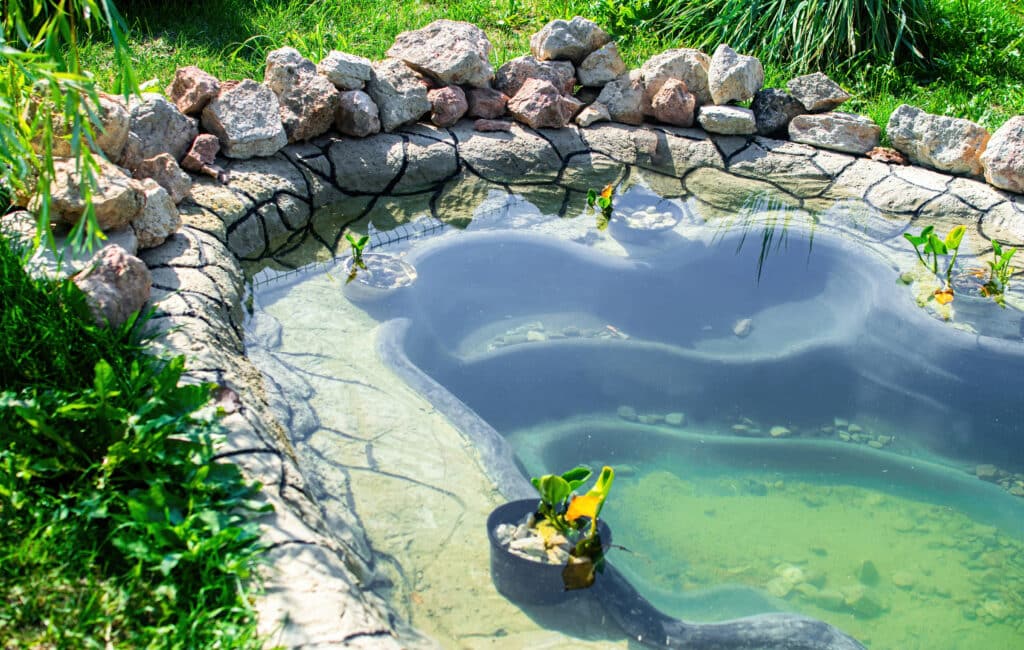
Create shelves for placement of potted water plants of various heights; the tallest will go on the lowest shelf. (© Andrei Lavr / Shutterstock)
5. Filling the Pond
- Add water: Slowly fill the pond, adjusting the liner as needed.
- Pump: If you plan to use a pump, determine where to place it and run the cord through an inconspicuous seam between the stones.
- Trim excess liner: Once filled, trim excess liner, leaving a bit extra for settling.
6. Landscaping
- Add rocks and plants: Place rocks around the edges and put some water plants in the pond.
- Create slopes: Create gentle slopes for animals to access the water easily.
7. Adding plants and fish
- Plants: Choose a variety of submerged, floating, and marginal plants. The top growth of plants needs to extend above the water’s surface, so the shortest plants should be on the upper shelves. Taller ones can go lower.
- Fish: If adding fish, wait a few days for the water to settle and the plants to acclimate.
8. Maintenance
- Water quality: Monitor and maintain water quality.
- Pump and filter: Install a pump and filter system if needed to keep the water clean.
- Regular cleaning: Remove debris and clean the pond regularly.
- Frog pond: Frogs like water to be still or slow-moving, so adjust your pump if planning for a frog pond.
Tips
- Safety: Consider installing a fence or safety net if you have small children or pets. Young children can drown in as little as 2 inches (5 cm) of water.
Permits: Check local regulations for any required permits.- Sustainability: Use rainwater to fill the pond if possible, and consider native plants to support local wildlife.
Provide water for wildlife How to design a backyard wildlife habitat About frogs and toads How to layer plants in your yard

